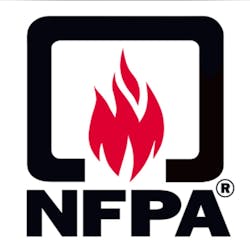Evaluation and Testing of ICE and EV Hazards and Sprinkler Protection Guidance for Parking Garages Underway
December 19, 2024 – Alternative fuel vehicles are designed with larger quantities of combustible materials (e.g. fuels, plastics, synthetic materials, etc.) that present new and unique hazards, particularly in parking garages and vehicle carriers. To help provide informed guidance for the fire safety design of parking garages or other facilities where a large number of vehicles are densely placed, the Fire Protection Research Foundation – the research affiliate of the National Fire Protection Association® (NFPA®) – is now undertaking the third part of a three-phase project addressing sprinkler protection guidance for modern vehicle hazards in parking structures and systems.
Characterizing EV Hazards in Parking Structures to Inform Fire Safety Design Guidance: Full-Scale Testing, the third phase of the project, will involve characterizing the overall hazard of modern vehicles (e.g., heat release rate, or HRR, of internal combustion engine and electric vehicles) and determining the overall impact of sprinkler protection on hazard mitigation through full-scale fire and sprinkler testing.
This experimental program ultimately aims to determine the optimal sprinkler design density to control vehicle fires and prevent spread to neighboring vehicles in a standard parking garage. To answer outstanding industry questions, this test program will include three baseline unsprinklered calorimetry tests to characterize the hazard of internal combustion engine (ICE) and electric vehicles (EV) followed by six tests in a mockup open parking garage with use of sprinkler densities aligned with current standards requirements and industry practice, and one test of a two-car stacker arrangement with sprinkler protection.
These experiments will provide crucial data on heat fluxes and fire spread in parking structures, informing fire protection practices and sprinkler design standards, by providing data on what hazard classification in NFPA 13, Standard for the Installation of Sprinkler Systems is appropriate for ICE vehicles and EVs in a parking garage. They will also provide a better understanding of the full-scale fire behavior of modern vehicles in different variables and fire scenarios.
Funding for this one-year project has been provided by the National Institute of Standards and Technology (NIST), along with support from industry sponsors, including the American Fire Sprinkler Association (AFSA), the American Society of Health Care Engineers (ASHE), Arup, Johnson Controls (JCI), National Fire Sprinkler Association (NFSA), Victaulic, Viking, and the FPRF Property Insurance Research Group (consisting of AXA XL, CNA Insurance, FM, The Hartford, Travelers Insurance, Verisk, and the Zurich Insurance Group).
While vehicle fires in parking structures that develop into large-scale incidents are fairly rare and the rate of civilian injuries is low, recent fires that occurred at Liverpool’s Echo Arena in the UK and Stavanger Airport in Norway involved hundreds of automobiles and resulted in severe structural damage, underscoring the damage and economic losses that can incur.
“Modern vehicles burn differently than traditional combustion engine vehicles, as a result of recent changes in vehicle design, materials, and motor technologies,” said Victoria Hutchison, a senior research project manager with the Foundation. “Recent events have highlighted the need to reclassify modern vehicle fire hazards based on results of large-scale fire testing and reevaluate recommended protection measures.”
For this release and other announcements about NFPA initiatives, research and resources, please visit the NFPA press room.
About the National Fire Protection Association (NFPA)
Founded in 1896, NFPA is a global, nonprofit organization devoted to eliminating death, injury, property and economic loss due to fire, electrical and related hazards. The association delivers information and knowledge through more than 300 consensus codes and standards, research, training, education, outreach and advocacy; and by partnering with others who share an interest in furthering the NFPA mission. For more information, visit www.nfpa.org. All NFPA codes and standards can be viewed online for free at www.nfpa.org/freeaccess.
